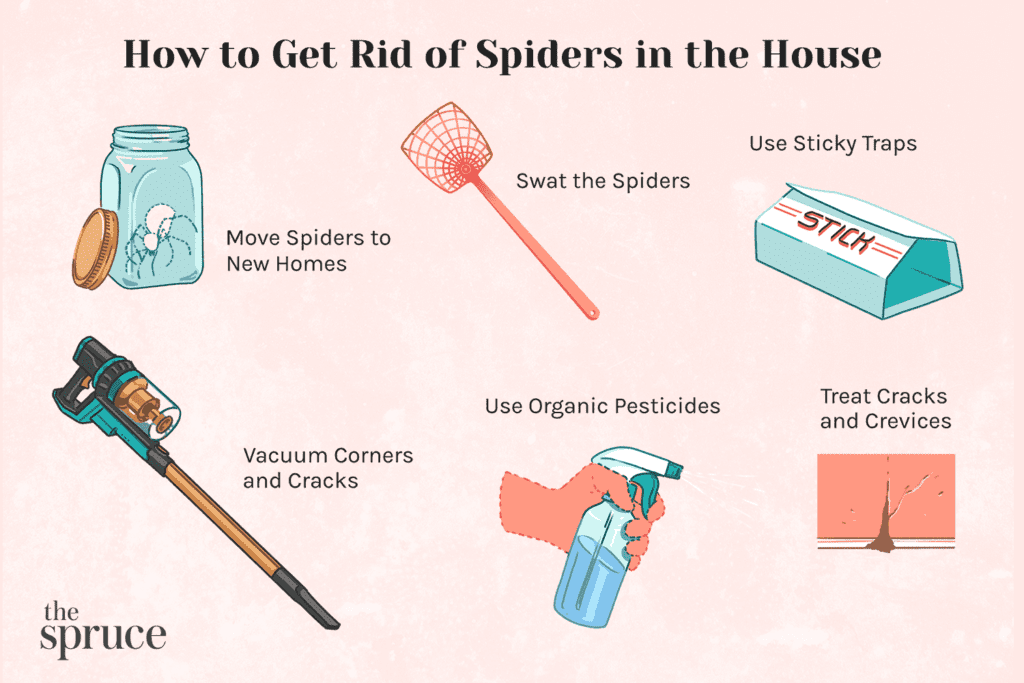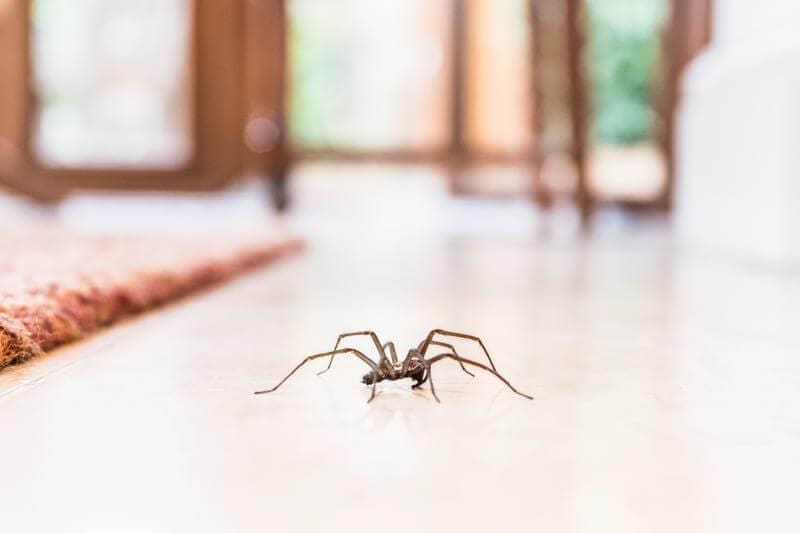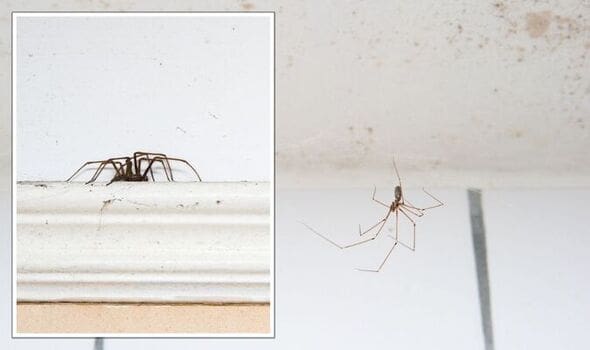Whether you’ve stumbled upon a web in the corner of your living room or had a close encounter with a creepy arachnid crawling across your bedroom floor, dealing with spiders can be a common and unnerving problem. But fear not! In this article, we will explore effective solutions for pest control when it comes to spiders. From natural remedies to professional services, we’ll provide you with the knowledge you need to tackle these eight-legged intruders and regain control of your space. So sit back, relax, and let’s banish those pesky spiders together!
Understanding Spiders
Spiders are fascinating creatures that belong to the arachnid family. They play an important role in the ecosystem by controlling the population of other insects. While most spiders are harmless, some can cause discomfort or even pose a threat to humans. Understanding the different types of spiders, their behavior, and lifecycles can help you better deal with any potential infestations.
Different Types of Spiders
There are thousands of species of spiders worldwide, but only a small percentage are commonly found in homes and buildings. Some of the most common types include the house spider, cellar spider, wolf spider, black widow spider, brown recluse spider, and hobo spider. Each species has its unique characteristics, including varying sizes, colors, and web-building behaviors.
Common Spider Behavior
Spiders are typically solitary creatures that prefer dark and undisturbed areas. They are skilled predators, feeding on insects such as flies, mosquitoes, and ants. Many spiders use webs as a means of catching prey, while others actively hunt their food. It’s important to note that most spiders are not aggressive towards humans and only bite when they feel threatened.
Spider Lifecycles
Spiders undergo a fascinating lifecycle, starting from eggs and progressing through several stages before reaching adulthood. After mating, female spiders lay eggs inside silk sacs called egg sacs. These sacs are usually protected in hidden locations until the spiderlings hatch. Once hatched, spiderlings go through several molts, shedding their exoskeletons to grow. The duration of a spider’s lifecycle varies depending on species, environmental conditions, and availability of food.
Signs of Spider Infestation
While the presence of a few spiders in your home is not necessarily a cause for concern, a spider infestation can become a nuisance. Knowing the signs of a spider infestation can help you take necessary action to prevent the population from growing.
Visible Webs and Egg Sacs
One of the most obvious signs of a spider infestation is the presence of visible spider webs and egg sacs. Spiders often build their webs in corners, ceilings, and other undisturbed areas. The webs vary in size and shape, depending on the species. Additionally, if you come across spherical egg sacs, usually containing hundreds of eggs, it’s a clear indication of a spider infestation.
Spider Bites
Another sign of a spider infestation is unexplained spider bites on your body. While most spider bites are harmless and cause minor irritation, some species can deliver venomous bites that require medical attention. If you notice multiple bites in a specific area or experience severe symptoms such as swelling, pain, or difficulty breathing, it’s crucial to consult a healthcare professional.
Presence of Spiders
The most evident sign of a spider infestation is, of course, the presence of spiders themselves. If you consistently spot spiders in various areas of your home, it’s a strong indication that there is an infestation. Be observant, as spiders can hide in dark corners, under furniture, or in other inconspicuous places.

Prevention Measures
Prevention is key when it comes to managing spider infestations. By implementing a few simple measures, you can minimize the chances of spiders taking up residence in your home.
Keeping a Clean and Clutter-Free Home
Spiders are attracted to clutter and dark, undisturbed areas. To prevent them from making your home their own, it’s essential to keep your living spaces clean and clutter-free. Regularly vacuum your floors, wipe down surfaces, and keep items neatly organized. By doing so, you remove potential hiding spots for spiders and eliminate their food sources.
Sealing Entry Points
Spiders can easily enter your home through small gaps and cracks in windows, doors, and foundations. Inspect your home for any openings and seal them using weatherstripping or caulk. Focus on areas around windows, doors, utility lines, and vents. By sealing these entry points, you create a barrier that prevents spiders from entering your home.
Removing Outdoor Spider Habitats
Spiders often build their webs and nests in outdoor areas near your home. Regularly inspect your yard and remove any debris, woodpiles, or overgrown vegetation that could serve as spider habitats. Trim shrubs and trees away from your home’s exterior, minimizing the spider’s ability to enter your living spaces.
Regularly Cleaning and Vacuuming
Regular cleaning and vacuuming is a simple yet effective way to prevent spider infestations. Pay close attention to hidden areas such as behind furniture, in closets, and along baseboards. By removing dust, cobwebs, and potential prey, you create an environment that is less attractive to spiders.
Installing Insect Screens on Windows and Doors
Installing insect screens on windows and doors provides an additional layer of protection against spiders and other insects. These screens allow for proper ventilation while keeping unwanted pests out. Make sure to repair any damaged screens and keep them properly maintained.
Natural Spider Repellents
If you prefer to use natural methods for spider control, there are several options available that can help repel spiders without the use of harsh chemicals.
Peppermint Oil
Peppermint oil has a strong scent that spiders find repulsive. Mix a few drops of peppermint oil with water and spray it around entry points, corners, and other spider-prone areas. Refresh the spray regularly to maintain its effectiveness.
Vinegar
Vinegar is another natural spider repellent. Mix equal parts of vinegar and water in a spray bottle and apply it to areas where spiders are likely to be present. Take caution when using vinegar on specific surfaces, as it could cause damage.
Citrus Peels
Spiders dislike the scent of citrus fruits, making citrus peels an effective natural repellent. Rub the peels of lemons, oranges, or grapefruits along baseboards, windowsills, and other areas where spiders are commonly found.
Lemon Eucalyptus Oil
Lemon eucalyptus oil is known for its insect-repellent properties, including spiders. Mix a few drops of lemon eucalyptus oil with water and spray it around entrances, windows, and other potential spider entry points.
Cedar Chips or Essential Oil
Spiders dislike the strong scent of cedar. Place cedar chips or sachets in areas where spiders are likely to enter, such as closets, basements, or garages. Alternatively, you can use cedar essential oil diluted with water and spray it in spider-prone areas.

Spider Traps and Catchers
Spider traps and catchers are useful tools for capturing and removing spiders from your home. Here are a few options to consider:
Glue Traps
Glue traps consist of sticky adhesive surfaces that capture spiders when they walk over them. These traps are especially effective in areas where spiders frequently pass or hide. Place the traps strategically along walls, corners, and under furniture.
Jar Traps
A jar trap involves placing a glass jar or cup with a narrow opening upside down over a spider. Slowly slide a piece of sturdy paper or cardboard underneath the jar, trapping the spider inside. Carefully carry the jar outside and release the spider back into the wild.
Handheld Spider Catchers
Handheld spider catchers are devices designed to catch spiders without harming them. These tools typically use elongated bristles or bristles attached to a vacuum-like mechanism. Place the bristles over the spider and apply gentle suction to capture it. Once caught, release the spider outdoors.
Electric Spider Vacuums
Electric spider vacuums utilize a suction mechanism to capture spiders safely. These devices allow you to catch spiders from a distance without getting too close. Once captured, you can release the spider outside without harming it.
Chemical Spider Control
If natural remedies and traps have not effectively controlled the spider population in your home, chemical spider control may be necessary. Here are some options to consider:
Insecticides for Indoor Use
There are various insecticides available specifically formulated for indoor spider control. These products often come in spray or aerosol form and can be applied to cracks, crevices, and other spider-prone areas. Follow the instructions carefully and take necessary precautions when using insecticides indoors.
Insecticides for Outdoor Use
Outdoor insecticides are designed to target spiders and other insects in your yard or around your home’s exterior. These products can help reduce the spider population and prevent future infestations. It’s important to choose an insecticide that is safe for outdoor use and follow the manufacturer’s instructions.
Residual Sprays
Residual sprays are long-lasting insecticides that provide residual protection against spiders. When applied to surfaces, these sprays create a barrier that spiders come in contact with, leading to their elimination. Follow the product instructions and apply residual sprays to areas where spiders are likely to hide or pass.
Dusts and Powders
Insecticidal dusts and powders are effective for spider control in hard-to-reach areas such as crawl spaces, attics, and wall voids. These products can be applied using a duster or hand-held sprayer and work by adhering to the spider’s body or entering their respiratory system.
Professional Pest Control Services
If your spider infestation persists despite your efforts, it may be time to consider professional pest control services. Pest control professionals have the expertise and knowledge to identify the extent of the infestation and use appropriate measures to eliminate spiders and prevent future problems. They can also offer advice on long-term prevention strategies.

Home Remedies for Spider Control
If you prefer to use homemade solutions, there are several home remedies you can try to control spiders. While their effectiveness may vary, these remedies can help deter spiders from your living spaces.
Baking Soda and Water Solution
Mix equal parts of baking soda and water to create a paste-like solution. Apply the mixture to corners, cracks, and other spider-prone areas. The smell and texture of the paste can deter spiders from these spaces.
Diatomaceous Earth
Diatomaceous earth is a natural powder made from fossilized remains of small aquatic organisms. Sprinkle diatomaceous earth in areas where spiders are commonly found, such as baseboards, windowsills, and entry points. The powder dehydrates spiders, leading to their demise.
Tobacco Spray
Steep a handful of tobacco leaves in water for a few hours. Strain the liquid and transfer it into a spray bottle. Spray the tobacco-infused water around spider-infested areas. The strong smell repels spiders, keeping them at bay.
Salt Spray
Mix a few tablespoons of salt with water and transfer it into a spray bottle. Spray the saltwater solution in corners, cracks, and other spider-prone areas. The grainy texture of the salt can deter spiders from these spaces.
Mint and Dish Soap Mixture
Combine a few drops of mint essential oil and a small amount of dish soap with water in a spray bottle. Shake the bottle gently to mix the ingredients. Spray the mint and dish soap mixture around entry points, windowsills, and other areas where spiders may enter. The mint scent acts as a natural repellent.
Getting Rid of Spider Webs
Spider webs can be unsightly and create a nuisance in your home. Here are a few methods to effectively remove spider webs:
Manual Removal
The most straightforward method of getting rid of spider webs is by manually removing them using a long-handled duster, broom, or brush. Gently sweep the web from top to bottom, making sure to collect any trapped spiders or egg sacs.
Using a Broom or Vacuum Cleaner
For hard-to-reach areas or when dealing with large spider webs, using a broom or vacuum cleaner can be more effective. Use an extension wand attachment on your vacuum or attach a soft brush to your broom to sweep away the web. Take necessary precautions to empty the vacuum bag or canister promptly to prevent spiders from escaping.
Outdoor Web Removal
If you’re dealing with spider webs outside your home, a garden hose can be a helpful tool. Use a gentle spray setting to spray water directly onto the web, dislodging it from its position. Be sure to stand at a safe distance to avoid getting soaked or coming into contact with potential spiders.
Preventing Rebuilding
To prevent spiders from rebuilding their webs in the same location, consider using a spider repellent spray or one of the natural remedies mentioned above. By deterring spiders from returning to the area, you can minimize the need for constant web removal.

Controlling Spider Food Sources
One effective method of spider control is by eliminating their food sources. By taking steps to reduce the population of other insects, you can naturally discourage spiders from infesting your home.
Eliminating Other Insects
Spiders primarily feed on other insects, such as flies, mosquitoes, and ants. By implementing proper pest control measures to reduce the populations of these insects, you simultaneously reduce the likelihood of attracting spiders.
Reducing Outdoor Lighting
Outdoor lighting attracts insects, which, in turn, attract spiders. By reducing excessive outdoor lighting or opting for yellow or sodium vapor bulbs, you can minimize the number of insects in your yard, subsequently reducing the spider population.
Proper Food Storage
Proper food storage is crucial in preventing other insects from infesting your home, which spiders may prey upon. Ensure that all food items, including pet food, are stored in airtight containers and cleaned up promptly after meals.
Keeping Garbage Sealed and Clean
Spiders are attracted to garbage, as it can be a breeding ground for insects. Keep your garbage cans sealed tightly and clean them regularly to prevent odors and reduce the chances of attracting spiders and other pests.
Using Ultrasonic Devices for Spider Control
Ultrasonic devices are electronic devices that emit high-frequency sound waves intended to repel spiders and other pests. Here are a few key points to consider when using ultrasonic devices for spider control:
How Ultrasonic Devices Work
Ultrasonic devices emit sound waves at a frequency that is typically not detectable by humans but can be uncomfortable for spiders and other pests. The high-frequency sound is thought to disrupt their nervous systems, prompting them to seek shelter elsewhere.
Effectiveness and Limitations
The effectiveness of ultrasonic devices for spider control is a topic of debate. While some users report positive results, others may not experience the same level of success. It’s important to note that ultrasonic devices may not work for all types of spiders and that the effectiveness may vary depending on factors such as the size and layout of the space being treated.
Choosing and Using Ultrasonic Devices
When selecting an ultrasonic device, look for a reputable brand and check customer reviews for feedback on effectiveness. Follow the manufacturer’s instructions regarding placement and coverage area. It’s important to note that ultrasonic devices should not be the sole method of spider control, but rather used in conjunction with other preventive measures.
By understanding spiders, recognizing signs of infestation, implementing prevention measures, and using a combination of natural remedies, traps, chemical control, and other methods, you can effectively manage spider populations in your home. Remember to choose the most appropriate techniques for your specific situation and consult with professionals when necessary. With a comprehensive approach, you can keep your home spider-free and enjoy a more peaceful living environment.


I am Randy, the author behind PestControld.com. Drawing from decades of experience, I aim to provide valuable insights, expert advice, and practical recommendations to help you make informed decisions when assessing viable pest control solutions.